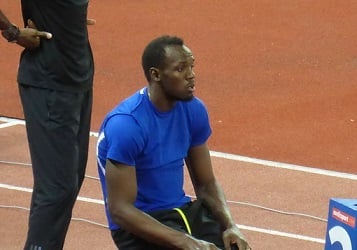HR managers can greatly reduce the impact of workplace stressors, engagement obstacles and unconscious bias
Looking purely at standards of health and fitness, Usain Bolt and the average HR director probably don’t have a lot in common.
However, there is a shared bond – and it comes from an unexpected source: wearable technology. The elite sporting world has been utilising wearable technology for years in order to identify the conditions in which a person’s body can achieve optimum performance.
The data provided by this technology indicates what we probably all know: peak performance is difficult to maintain at all times. Elite athletes need periods of rest. They will focus on intense bursts of high performance followed by periods where they replenish themselves with rest or lower-stress physical activity.
Contrast that with the expectations of high performance in your organisation: it’s not just expected 9-5, but possibly around the clock.
It’s this disconnect that technology is helping to close.
Wearables in the business world have been utilised in several areas – wellness and safety programs being the two obvious examples. It’s commonplace to hear of employers buying fitbits for employees in order to shift them towards healthy activities.
Meanwhile companies like Rio Tinto have been building sensors into equipment and clothing to monitor fatigue and guard against micro-sleeps. However, according to Aaron McEwan, HR advisory leader at CEB, this barely scratches the surface of what’s possible.
“For me there are much loftier goals that we can work towards,” he said. “This technology can be an effortless collector of data which could enable organisations to do so much.”
Using the right algorithms, HR managers could greatly reduce the impact of workplace stressors, engagement obstacles and unconscious bias so that organisations can more accurately make informed decisions regarding appropriate work environments, task distribution, promotions, pay and overall performance.
“By using technology in this way, HR can ensure greater and faster access to information about individuals and networks that can more accurately measure the true impact of employees on the business, rather than just relying mostly on managers/360 degree outputs,” McEwan said.
Fitness trackers have been very effective at changing behaviours and doing so in a way that doesn’t require an intervention from a manager or coach: people simply get a kick out of hitting their step count. That feedback is immediate and (hopefully) a positive inducement to keep doing it.
Then there’s the ‘nudge’ factor. Paying a debt to neuroscience, psychological ‘nudges’ will gently push people towards the right behaviours. McEwan cited an example in the UK. Rather than punishing people for not filing their tax returns on time, the government opted to use psychological ‘nudges’ to gently make them do the right thing.
Another example comes from Norway. Exiting the local subway system, commuters had a choice of stairs or escalator. Around 90% of people use the escalator and 10% the stairs. However, once the stairs were turned into an interactive piano keyboard, the usage rate flipped.
“What we’ve got are basic fitness trackers to give us these feedback loops around positive behaviours – whether it’s the number of steps taken or the number of times we stand up from our desks each day. All these things can create certain conditions for high performance,” said McEwan.
“Then you have the nudges as well. The Apple watch is probably the closest to getting us using those types of nudges. There’s an app called ‘breathe’, which prompts you to take a moment to take some deep breaths and relax.”
For McEwan, wearable technology is the “dark horse” which, when combined with algorithmic-based talent management platforms, “has the potential to change the landscape when it comes to engagement, performance and wellbeing”.
He believes wearables will be able to tack work flows, as well as peaks and troughs of activity. They’ll also keep track of who employees are working with.
“Our research clearly identifies that more than 50% of performance is driven by the network – that’s how people contribute. Wearables are also a way of understanding who the hubs are in the network and who are the people being drained. From there we can see how to spread that impact so we don’t overstress certain individuals.”

